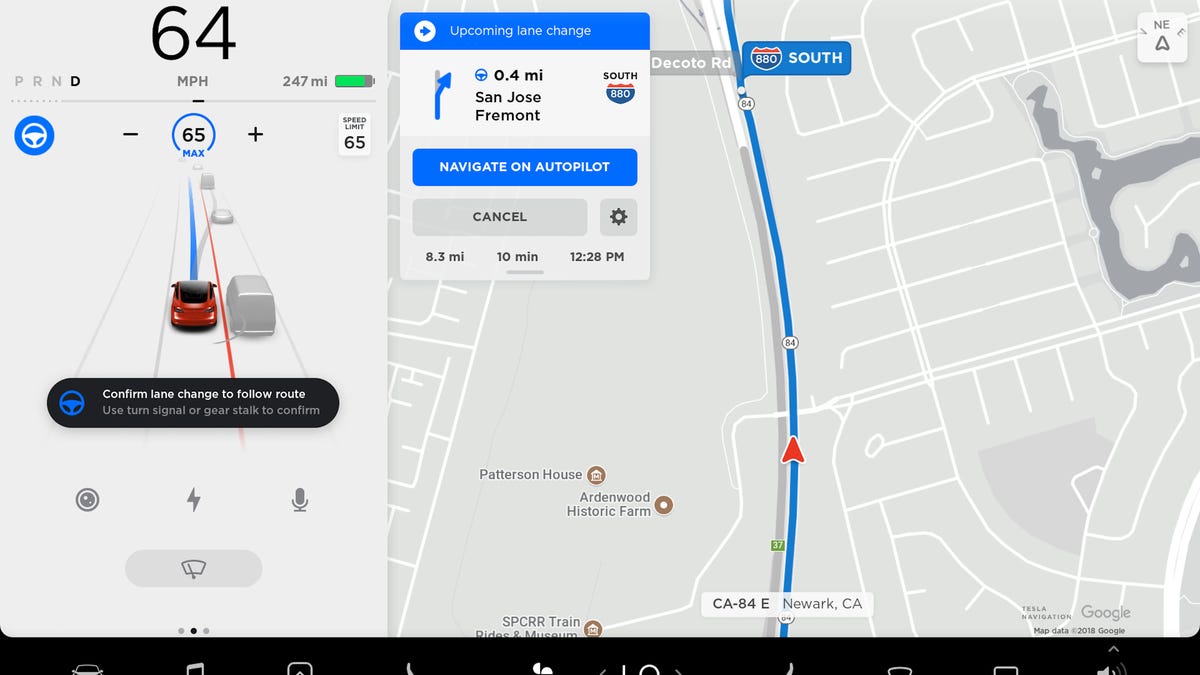Drivers assume Tesla's Autopilot offers more leeway than it does, IIHS study finds
What's in a name? A lot, apparently.
While it's always on drivers to read every manual and fully understand the underlying tech of advanced driver-assist systems, even something simple as a name could lead unknowing consumers to believe the systems are more capable than they really are. That's the idea behind one of two new studies from the Insurance Institute for Highway Safety.
The IIHS on Thursday published the results of two studies focused on the latest driver-assist systems. One study looked at the names of the products themselves and how that affects consumer perception of required attentiveness behind the wheel, while the other study looked at the visual information the system offers to the driver and whether or not it can be reliably understood by people lacking knowledge of the user interface.
Study 1: A rose by any other name...
For this study, the IIHS polled more than 2,000 drivers about five different driver-assist systems: Audi and Acura's Traffic Jam Assist, BMW's Driving Assistant Plus, Cadillac's Super Cruise, Nissan's ProPilot Assist and Tesla's Autopilot. Those polled were only given the names of the systems and weren't told which manufacturers were responsible for them.
Based on the names alone, the IIHS asked its participants whether or not certain activities would be considered safe while a given system was active. According to the results, those polled assumed Autopilot gave much more leeway for hands-off operation and using a phone in the driver's seat, although thankfully a majority of drivers still believed none of the activities mentioned were safe to do (because they aren't). Respondents assumed less capability from every other system in the poll, suggesting the name itself might have something to do with it. Not everyone fully understands how an airplane's autopilot actually functions.
It's worth noting that Super Cruise is actually the only system in the poll that lets a driver take their hands off the wheel, because its camera-based monitoring system can track a driver's gaze to ensure they're still looking at the road ahead, which no other automaker offers at this time. All other systems require a driver's full attention, and it's stated as such in the literature for each.
"This survey is not representative of the perceptions of Tesla owners or people who have experience using Autopilot, and it would be inaccurate to suggest as much," Tesla said in an emailed statement. "If [the] IIHS is opposed to the name 'Autopilot,' presumably they are equally opposed to the name 'Automobile.' Tesla provides owners with clear guidance on how to properly use Autopilot, as well as in-car instructions before they use the system and while the feature is in use."
Study 2: Conveying information clearly
The second study focused on what driver assists are conveying to the driver. Using the display from a 2017 Mercedes-Benz E-Class equipped with the Drive Pilot system, 80 volunteers looked at videos of the gauge cluster and were asked if features were active or inactive, and why they thought that. Half of the participants were given information about the system ahead of time, while the other half went in blind.
Most people in the study were able to figure out when adaptive cruise changed a car's speed, but most were also confused when a vehicle ahead was out of detection range. Those who received training could reliably tell when lane-centering wasn't active (the icon changes from green to gray), but those without training had a hard time figuring that out. What's interesting is that both halves of the group had a difficult time explaining why lane-centering wasn't active.
The IIHS' solution here is pretty straightforward: Orientation. Given the disparities between each half of the group in this study, it's obvious that dealership employees need to be fully versed in these systems, so that they can reliably convey a fair amount of very important information to buyers. While every person should read the owner's manual, it's not necessarily right to assume everyone will, and hands-on training in person goes a much longer way toward building knowledge of this kind of tech. It's on both automakers and owners to ensure clear communication about how a system functions, why it does and what its limitations are.


